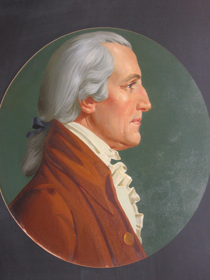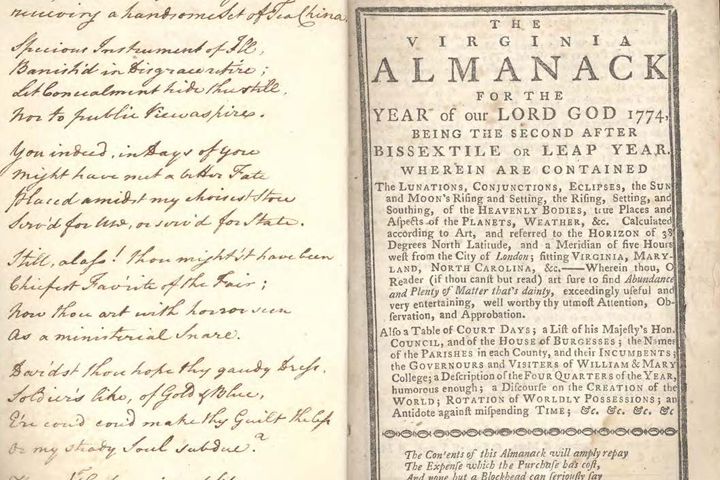Library Digitizes St. George Tucker Almanacs
William & Mary Libraries recently digitized its collection of St. George Tucker almanacs, making these materials open and accessible online. The collection consists of 30 almanacs owned by Tucker, a prominent 18th century lawyer, judge and William & Mary law professor.
 The almanacs are part of the Tucker-Coleman Papers, an extensive collection of the Tucker and Coleman families of Williamsburg, Winchester, Lexington, Staunton and Richmond from 1664 to 1945, housed in the university’s Special Collections Research Center in Swem Library. The majority of the almanacs were donated to Swem Library in 1966. Recently, C. Haldane Jackson, a descendent of Tucker, donated two additional almanacs to the library.
The almanacs are part of the Tucker-Coleman Papers, an extensive collection of the Tucker and Coleman families of Williamsburg, Winchester, Lexington, Staunton and Richmond from 1664 to 1945, housed in the university’s Special Collections Research Center in Swem Library. The majority of the almanacs were donated to Swem Library in 1966. Recently, C. Haldane Jackson, a descendent of Tucker, donated two additional almanacs to the library.
“We are very pleased to take this first step in digitizing the entire Tucker-Coleman Collection,” said Jay Gaidmore, director of the Special Collections Research Center. “One of our priorities is making collections more open to our users, and that is especially true for our unique collections like the papers of St. George Tucker and his descendants.”
The almanacs are especially notable for the hand-written notes Tucker included on the blank pages incorporated into the specially bound volumes. The notes run from 1769-1807 and range from short diary entries recording events and day-to-day life to garden planting plans to business transactions to births and deaths of Tucker family members.
“The notes are very interesting,” said Susan Riggs, the Francis Lightfoot Robb Special Collections Librarian. “For example, there are two almanacs for 1774. The one printed in Virginia has notes regarding when [Tucker] was examined by George Wythe to practice law and when he received his license.”
Another interesting find Riggs has discovered are the notes in one of the most recently acquired almanacs: the 1795 book. In this volume, Tucker left behind very detailed notes regarding gardens at the Tucker House, which still stands in Colonial Williamsburg.
“Tucker planted rows of fruit trees and, because of these notes, we now know the types of trees he planted and their locations on the grounds,” Riggs said. “Since there is an interest in restoring gardens at the various historical sites in Virginia, these almanacs should prove invaluable to horticulture historians.”
About William & Mary Law School
Thomas Jefferson founded William & Mary Law School in 1779 to train leaders for the new nation. Now in its third century, America's oldest law school continues its historic mission of educating citizen lawyers who are prepared both to lead and to serve.
